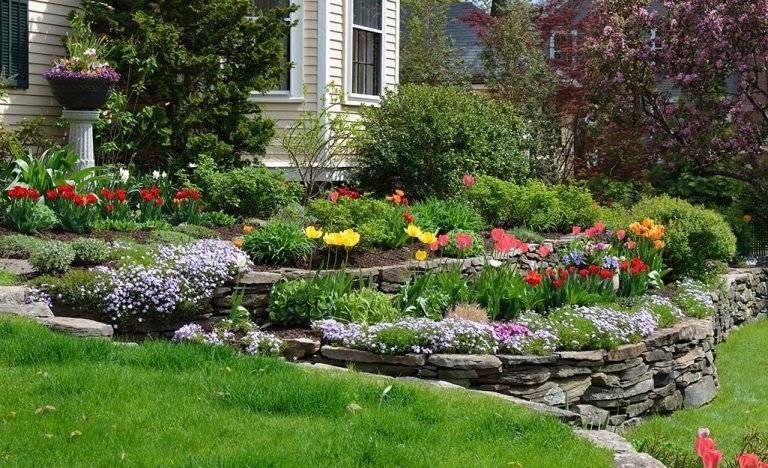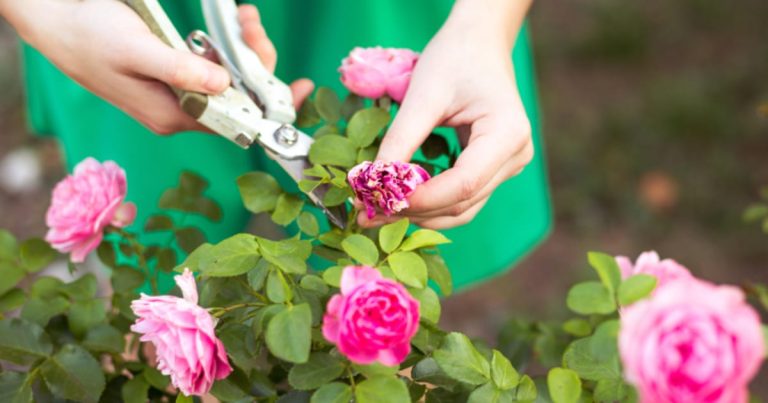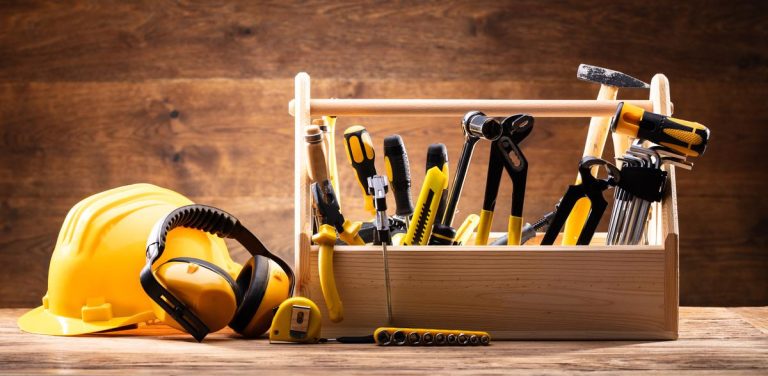
Gardening is one of those timeless pursuits that offers both personal satisfaction and tangible rewards. Whether it’s tending to a small balcony garden or creating an expansive backyard oasis, the art of gardening allows us to reconnect with nature and enhance our living spaces. As gardeners, we face an ongoing debate—tools versus flowers. While both are essential components of a successful garden, the question remains: what works best in shaping an ideal outdoor environment?
To answer this, we must first examine the role each element plays in the garden, the strengths and limitations they bring to the table, and how they can complement each other to achieve a harmonious and flourishing outdoor space. This article delves into the essential functions of tools and flowers in gardening, exploring their individual merits and how the two can work together to create the best possible outdoor experience.
1. The Role of Tools in Gardening
When it comes to gardening, tools are the unsung heroes that allow us to transform the land, nurture our plants, and maintain a healthy garden. A gardener’s tool collection is vital for virtually every step of the process, from soil preparation to plant care. The effectiveness of any gardening project is significantly influenced by the quality and appropriateness of the tools used.
Soil Preparation and Planting: One of the most fundamental tasks in gardening is preparing the soil. The soil provides the foundation for your plants, and without the right tools, this crucial step becomes an overwhelming and tedious process. Shovels, spades, and garden forks help break up compacted soil, allowing roots to penetrate more easily. A hoe, meanwhile, is essential for weeding and maintaining loose, aerated soil. Without these tools, even the most resilient flowers will struggle to thrive.
Maintenance and Care: The longevity and health of your garden depend on consistent upkeep. Pruning shears, hedge trimmers, and lawnmowers allow gardeners to maintain plants and grass to encourage healthy growth and improve the overall appearance of the landscape. Tools like watering cans, sprinklers, and hoses help ensure that plants receive the right amount of water, preventing both overwatering and dehydration.
Efficiency and Precision: The beauty of tools lies in their ability to streamline gardening tasks. A good set of tools allows for more precision, especially when dealing with delicate tasks such as transplanting flowers or designing intricate garden layouts. Similarly, tools like garden trowels and digging forks help achieve accurate planting depth, ensuring that each plant is placed in its optimal position.
However, despite the importance of tools, they come with limitations. Tools do not possess the charm or transformative power that flowers do. While they are essential for upkeep, they are not what draw the eye or evoke emotional responses. The functionality of tools may support the garden, but it is the aesthetic appeal of flowers that infuses life into the landscape.
2. The Importance of Flowers in Gardening
Flowers are arguably the heart and soul of any garden. While tools help maintain the garden’s health and structure, flowers are the visual centerpiece that defines its character. The color, texture, and fragrance of flowers bring a unique vibrancy to the outdoor space, offering a connection to the natural world that no tool can replicate.
Aesthetic Appeal: Flowers are undeniably the focal point of most gardens, providing bursts of color, fragrance, and texture. The presence of flowers can turn a dull, lifeless yard into a dynamic, inviting space. Whether it’s the vivid yellows and reds of sunflowers, the delicate pastel hues of tulips, or the deep purples of lavender, flowers add diversity and beauty. They transform an ordinary garden into a captivating work of art that can evoke joy, tranquility, and even nostalgia.
Seasonal Interest: One of the great appeals of flowers is their seasonal rhythm. A well-planned garden with an assortment of flowers that bloom throughout the year ensures that the space remains vibrant and interesting, no matter the season. Spring brings daffodils and crocuses, summer is filled with roses and daisies, and fall introduces chrysanthemums and asters. By planting flowers with different blooming periods, gardeners can enjoy a constantly evolving display of colors and fragrances.
Biodiversity and Ecological Balance: Beyond their beauty, flowers are integral to supporting local ecosystems. Pollinators, including bees, butterflies, and hummingbirds, rely on flowers for nectar and pollen. This vital role helps sustain biodiversity in your garden and the surrounding environment. Flowers also encourage a healthy ecosystem by attracting beneficial insects that can naturally control pests, reducing the need for chemical interventions.
Mental and Emotional Well-being: Scientific research has shown that the mere presence of flowers can have a significant impact on mental health. Gardens filled with vibrant flowers have been linked to reduced stress, anxiety, and depression. The act of gardening itself, coupled with the beauty of flowers, provides a therapeutic experience that helps calm the mind and uplift the spirit. Flowers create a sensory experience that not only beautifies the space but also enriches the emotional and psychological landscape.
Despite these undeniable benefits, flowers come with their own set of challenges. They require regular care, proper soil conditions, and appropriate sunlight, and they are often susceptible to pests and diseases. Flowers, especially those that are exotic or delicate, can be high-maintenance and may not always thrive in certain climates or environments. Furthermore, flowers have a limited lifespan. Once they bloom, they eventually fade, requiring constant replanting or seasonal rotation to maintain their aesthetic value.
3. Balancing Tools and Flowers: A Harmonious Approach
Rather than viewing tools and flowers as competing forces, it is more beneficial to recognize how the two can work in tandem to create a flourishing garden. While tools provide the structure and maintenance needed to keep a garden healthy, flowers bring beauty, vibrancy, and life to that structure.
Supporting Healthy Growth: Tools allow gardeners to prepare the soil, plant flowers at the right depth, and maintain an environment conducive to flower health. Proper soil aeration, correct irrigation, and efficient weeding are all vital steps in ensuring that flowers can thrive. Without the right tools, the flowers themselves would struggle to reach their full potential.
Creating a Design Vision: Tools also help gardeners implement a cohesive vision for their garden. While flowers provide the color palette, tools enable gardeners to achieve layout precision and define spaces through hardscaping elements like paths, retaining walls, and garden beds. A landscaper may use tools to design intricate garden layouts, setting the stage for the flowers to shine.
Maximizing Sustainability: Tools also help maintain sustainable gardening practices that allow flowers to flourish year after year. From using composters to creating efficient irrigation systems, gardening tools help reduce waste and conserve resources, which ultimately supports the health and longevity of your flowers.
Maximizing Time and Energy: Gardening tools make flower care more efficient. With the right equipment, you can prune, weed, and water your plants faster and with more precision, ensuring that the flowers remain healthy and vibrant for longer. The time saved through the use of tools allows you to focus on the creative aspects of gardening, such as selecting new flowers or arranging them in visually appealing ways.
4. Conclusion
In the debate of tools versus flowers, it becomes clear that both are integral to successful gardening and outdoor aesthetics. Tools provide the foundation for growth and maintenance, ensuring that your flowers have the optimal environment to thrive. Flowers, in turn, offer beauty, vibrancy, and ecological benefits that turn a functional space into a sanctuary.
Ultimately, the question of what works best depends on your specific gardening goals. If your focus is on creating a functional and healthy garden, tools are your essential companions. If you seek to elevate your outdoor space with visual appeal and emotional resonance, flowers take the lead. However, for a garden that truly excels, it is the harmonious interplay of both tools and flowers that creates a balanced, sustainable, and beautiful outdoor environment.
You May Also Like
Landscaping vs. Greenhouse: ...
08 April 2025
Why Your Gardening & Ou ...
06 April 2025
How to Improve Your Home wit ...
03 February 2025
Popular Post
Expert Insights on Installing Solar Power Systems
28 October 2025Local Plumbing Expertise You Can Trust in Killeen
22 August 2025Innovative Solutions for Refurbishing Commercial Spaces
14 August 2025How to Improve Your Home with Valuation and Agents
30 April 2025Recent Posts
- Expert Insights on Installing Solar Power Systems October 28, 2025
- Local Plumbing Expertise You Can Trust in Killeen August 22, 2025
- Innovative Solutions for Refurbishing Commercial Spaces August 14, 2025
- How to Improve Your Home with Valuation and Agents April 30, 2025
- The Beginner’s Guide to Design in Home Improvement April 24, 2025
- How to Improve Your Home with Maintenance and Repair April 16, 2025
- Why Your Roofing Strategy Needs a Flat Roof April 10, 2025
Archives
- October 2025 (1)
- August 2025 (2)
- April 2025 (10)
- March 2025 (2)
- February 2025 (7)
- January 2025 (8)
- December 2024 (6)
- November 2024 (6)
- October 2024 (6)
- September 2024 (5)
Categories
- Cleaning & Maintenance (5)
- Gardening & Outdoor (5)
- Home Decor (5)
- Home Improvement (5)
- HVAC (5)
- Moving (5)
- Plumbing (6)
- Real Estate & Property (5)
- Roofing (6)
- Smart Home (6)





